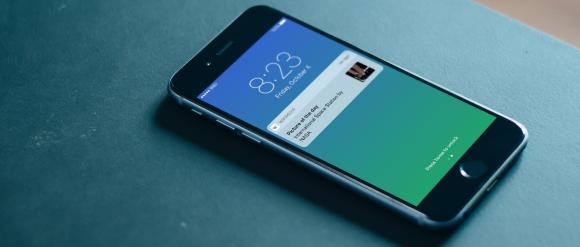
The mobile apps team at the Wikimedia Foundation helps people everywhere access the world’s largest collection of free knowledge—Wikipedia and its sister projects—on mobile devices. Apps play an important part in this effort. Apps provide a unique, high quality mobile experience for our readers, and enable users to access Wikimedia’s freely licensed content across a plethora of devices.
In 2014, we launched our first native mobile apps for iOS and Android, and we’ve been improving over the last two years. Recently, we updated Wikipedia for iOS with new ways to search and explore Wikipedia: we added the Explore screen, which puts the site’s content and personal recommendations in a mobile friendly feed, made it easy to search in your preferred languages, and added integration with OS-level search (called Spotlight on iOS).
Now we’re looking at notifications as another tool for providing users the most relevant information on Wikipedia and its sister projects. Notifications are a widely used way to surface timely or relevant information. They can be “push” or “pull”: someone might, for example, see an alert pushed to them on their phone’s lock screen, or they might swipe down on their lock screen to pull in the latest updates.
Earlier this year, the Collaboration team enabled editing notifications across wikis. Now the Reading team is interested in how notifications could bring more volunteer-created and curated content to readers.
What if, just by looking down, someone could learn about the history of the place they are walking by? What if readers heard about a major world event, on their tablets over their morning coffee, from a free, neutral, source? Notifications have the potential to highlight the most relevant volunteer-contributed information on Wikipedia and the other Wikimedia projects at the right place and time.
We actually had a chance to pilot this idea on iOS 10, the operating system from Apple that will be released this fall. At their 2016 Worldwide Developers Conference this week, Apple showed this early concept to attendees. We’ll be posting our work on notifications to GitHub, under a permissive free license, as we always do. We’re excited to see open source technology being used in new ways to share knowledge with people around the world.
We’re also starting a conversation on wiki about these initial concepts. We hope the prototypes we’ve built so far will provide tangible examples of how notifications can be used to surface the informative content people expect from Wikipedia.
Privacy is an important value of our movement, and apps allow us to explore features like notifications while protecting user privacy. With notifications on apps, we’re able to send notifications directly from the app to the user, without requiring data to travel through Apple’s servers. And any notification features included on Wikipedia mobile apps will be on a user opt-in basis.
Notifications is just one area we’re exploring. We’re also starting a conversation on wiki about the next generation of map-based browsing and finding content near your location. We’re also working on many other improvements, like making random articles easier to get to, ensuring full accessibility for disabled readers, and other user-requested features.
We look forward to talking with editors and readers to continue to improve the app experience. Notifications could offer a new way of reaching people on mobile apps around the world, and highlight the 15 years worth of free knowledge Wikimedians have created for the world.
Josh Minor, Product Manager, Reading Product Management
Wikimedia Foundation

Can you help us translate this article?
In order for this article to reach as many people as possible we would like your help. Can you translate this article to get the message out?
Start translation